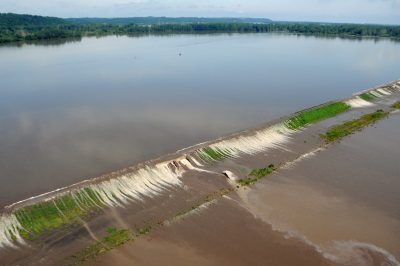Guest Blog Post by Del Shannon, PE, M.ASCE
The grades are in again, and to those of us who care and worry and fret about our country’s infrastructure it’s easy to wince as we scroll through the letters. Mostly C’s and D’s with a couple of B’s, but not an A in sight. The overall report card is disheartening, and would have gotten me grounded had I brought it home.
But we don’t have the option of grounding ourselves until things get better. Our infrastructure is the foundation of our country. It supports everything we rely on. Infrastructure allows us to move goods to markets, supply water for our food and ourselves, energize our smartphones and computers, heat and cool our homes, create safe spots for our waste. Our infrastructures touches everything in our lives.
With 17 report card categories this blog post can’t possibly touch on all these issues, so I’ve picked two – dams and levees – where I spend most of my time working.
There are over 91,000 dams scattered throughout virtually every corner of the U.S. and they serve many different purposes. Some hold drinking water, others provide flood control, a small number (only about 3%) help create clean hydropower, some are used for irrigating crops, and still others store vast amounts of our waste.
Our dams are built with earth, rock, concrete, asphalt, steel, and a host of other locally accessible materials, and they are as widely varied as our people and our landscape. And yet with all of these differences and variations they all must do the same thing; they must remain safe and standing through hurricanes, floods, earthquakes and everything else nature (and humans) can throw at them.
There are over 35,000 miles of levees in the US, maybe even more…no one is exactly sure, and like dams they are built mostly from nearby soil and rock. Most of the time they do little other than stand watch over their surroundings as day after normal day passes by. But when a large flood occurs they are quickly called to hold back these waters and push them away from the towns and fields and people they protect.

Source: USACE
And most of the time our dams and levees do their job perfectly. Nearly all of the 91,000 dams and 35,000 miles of levees stay safe and stable throughout every circumstance. The only problem is that “nearly all” isn’t good enough because the consequences of the failure of these dams and levees is enormous. When dams and levees fail, the risk that the subsequent flooding will kill people is extremely high.
Our dams and levees received a D grade in this latest report card. These structures generally weren’t built according to our latest knowledge about seismic activity or the changing climate. Additionally, we’re not performing fixes, upgrades, and maintenance fast enough to prevent future failures from occurring.
A good analogy is the check engine light on a car. When this light blinks on it’s a warning that we need to quickly take our car to the mechanic to address an issue, and ignoring this issue only becomes more and more expensive the longer we wait. The ASCE Infrastructure Report Card is our check engine light. It is our reminder that we must deal with this issue now because it’s only getting more expensive and dangerous with time. And our dams and levees continue to age.
But there is optimism that we’re making progress. The recent proposal from the Biden administration focusing on upgrading our infrastructure is a great first step and a recognition by our leadership that we must make continued investments in these structures and systems. They are vital to the safety, security and prosperity of us all.
Infrastructure isn’t political or partisan; it’s a necessity for everyone. Like clean and safe water, there is no substitute or replacement for our infrastructure. It must be recognized, planned, built, cared for, worried about, and constantly maintained for the benefit of us all.
